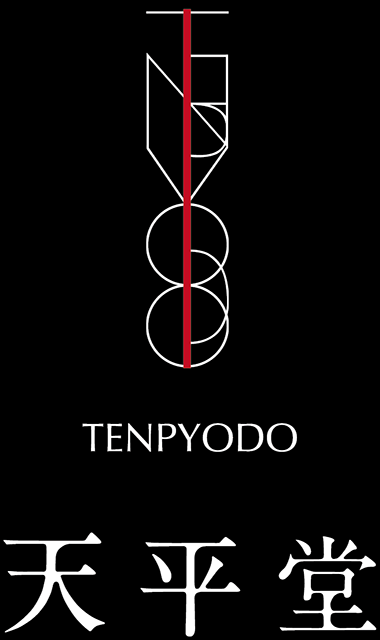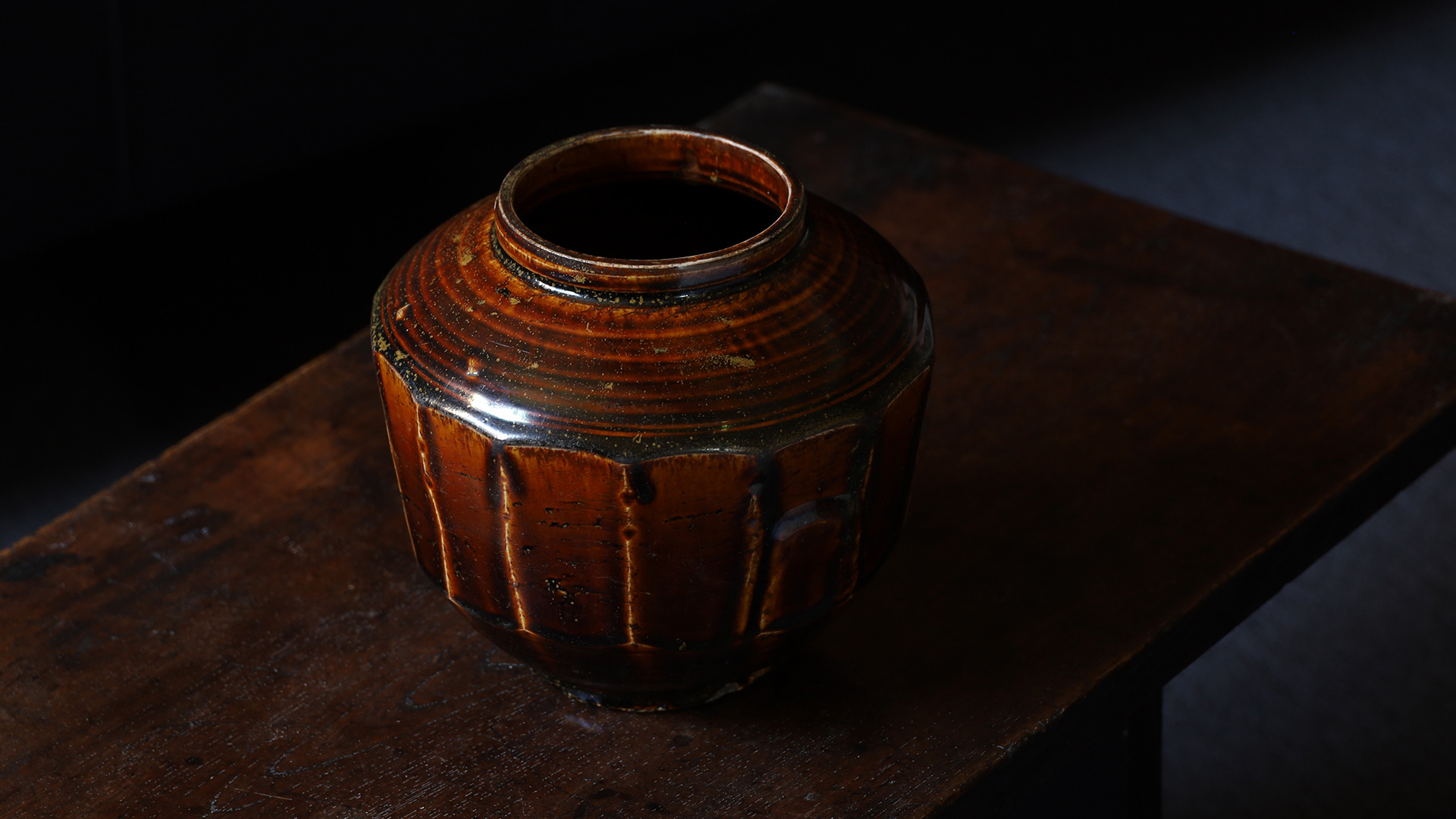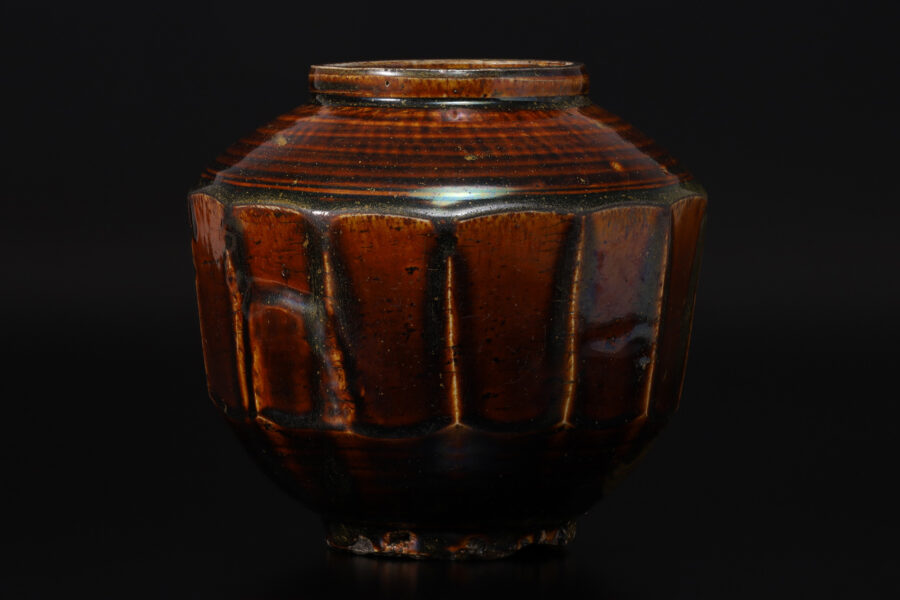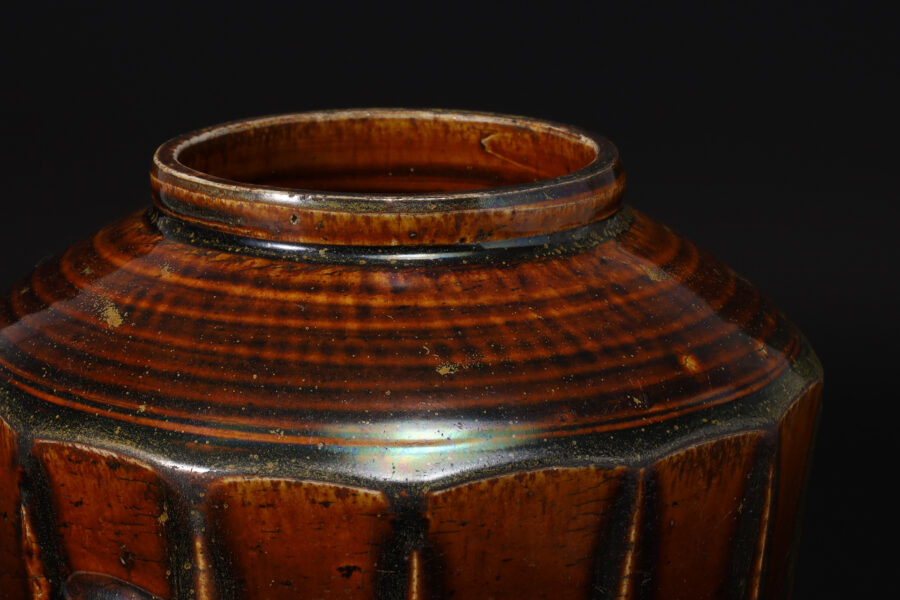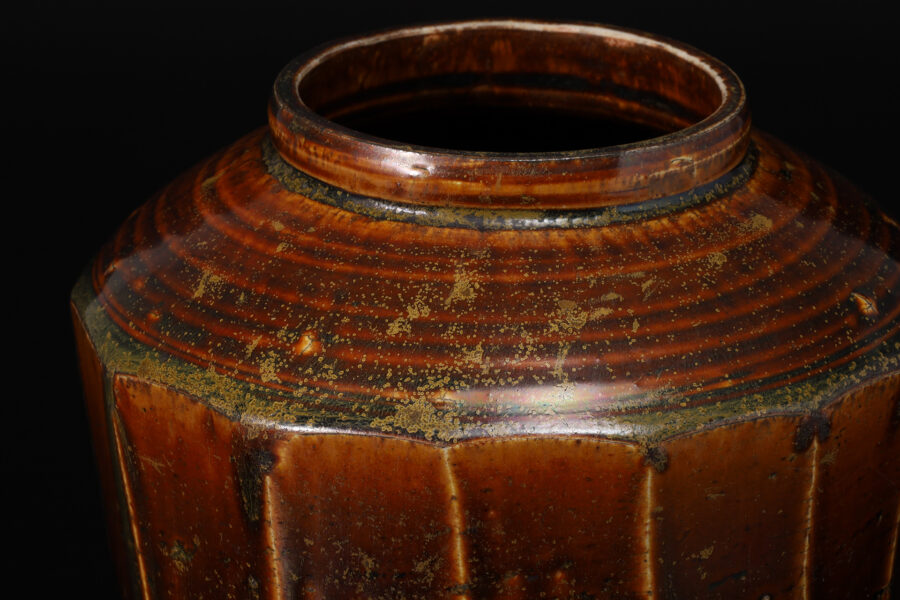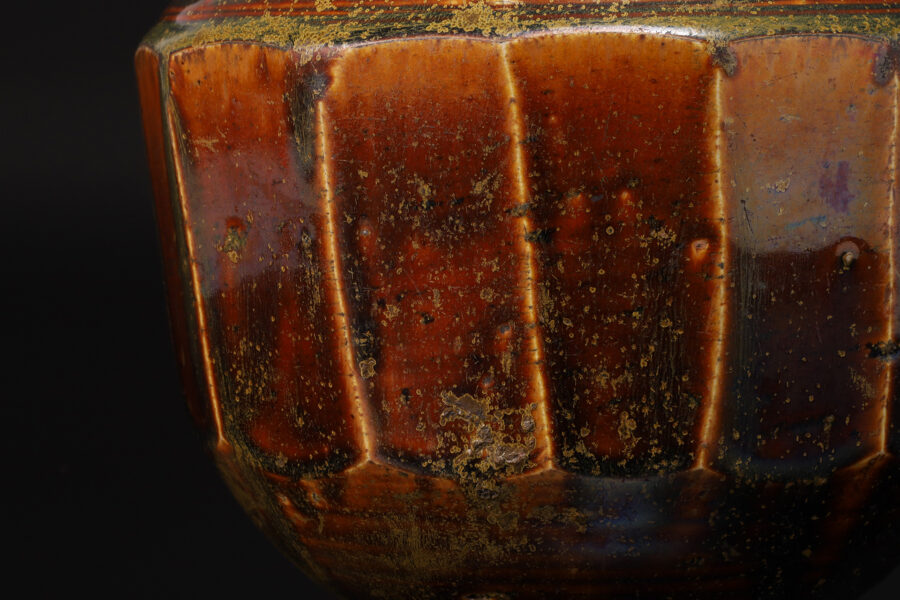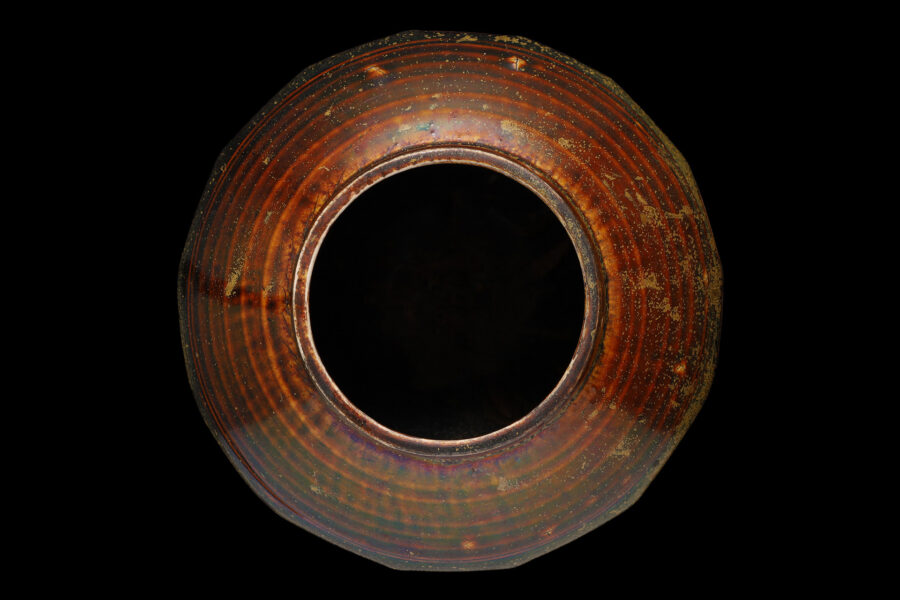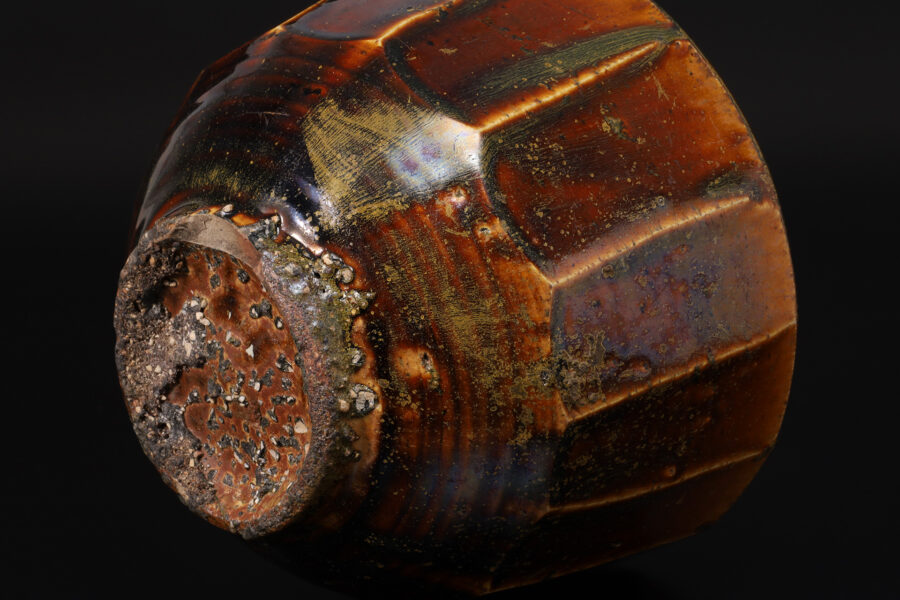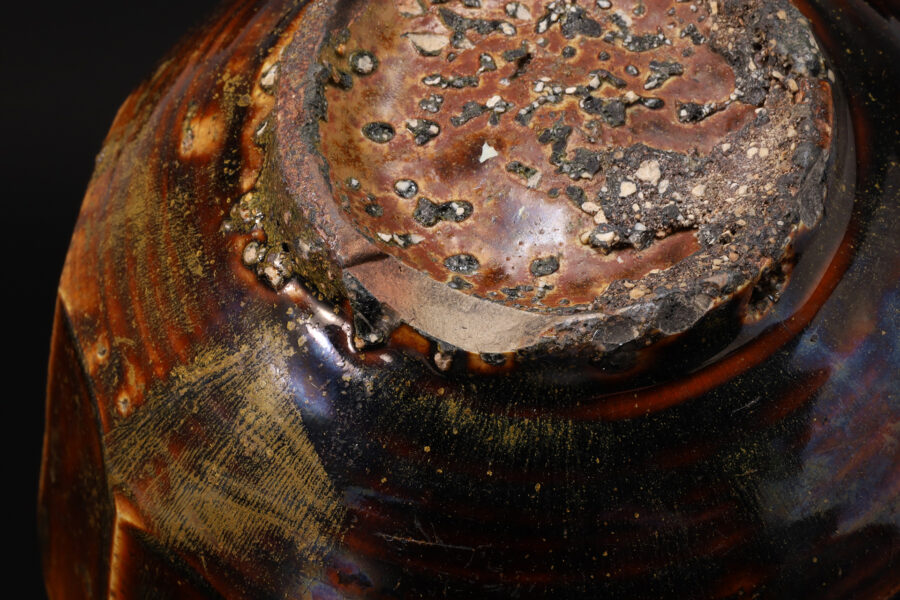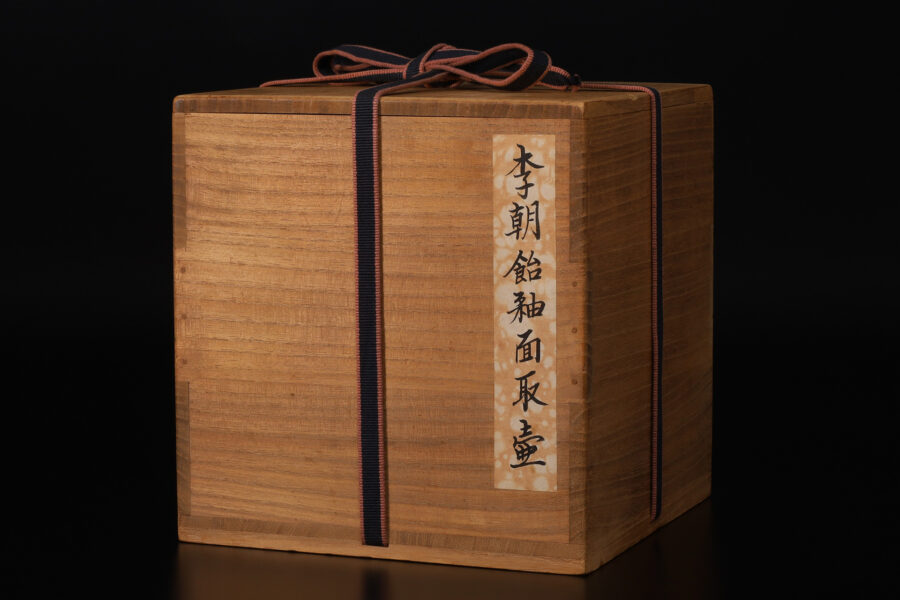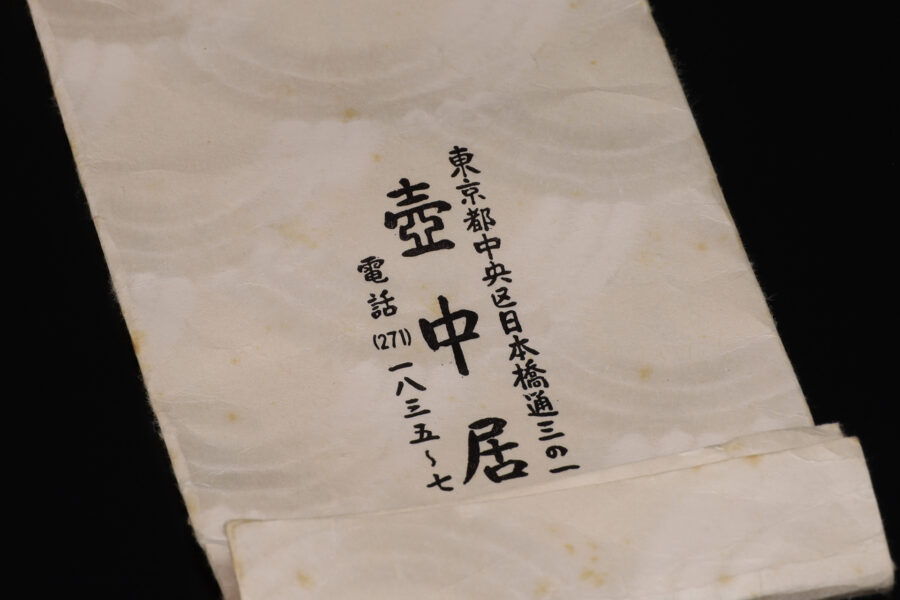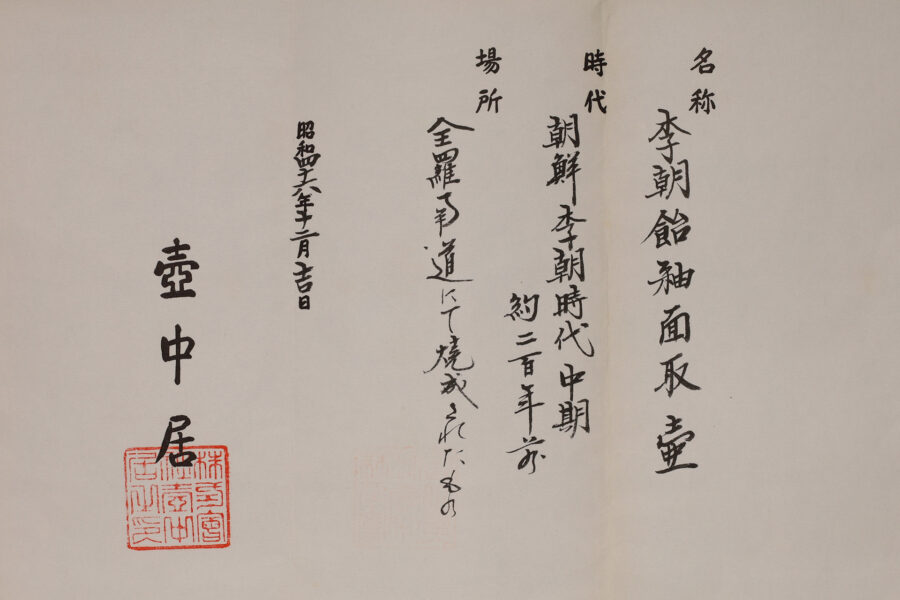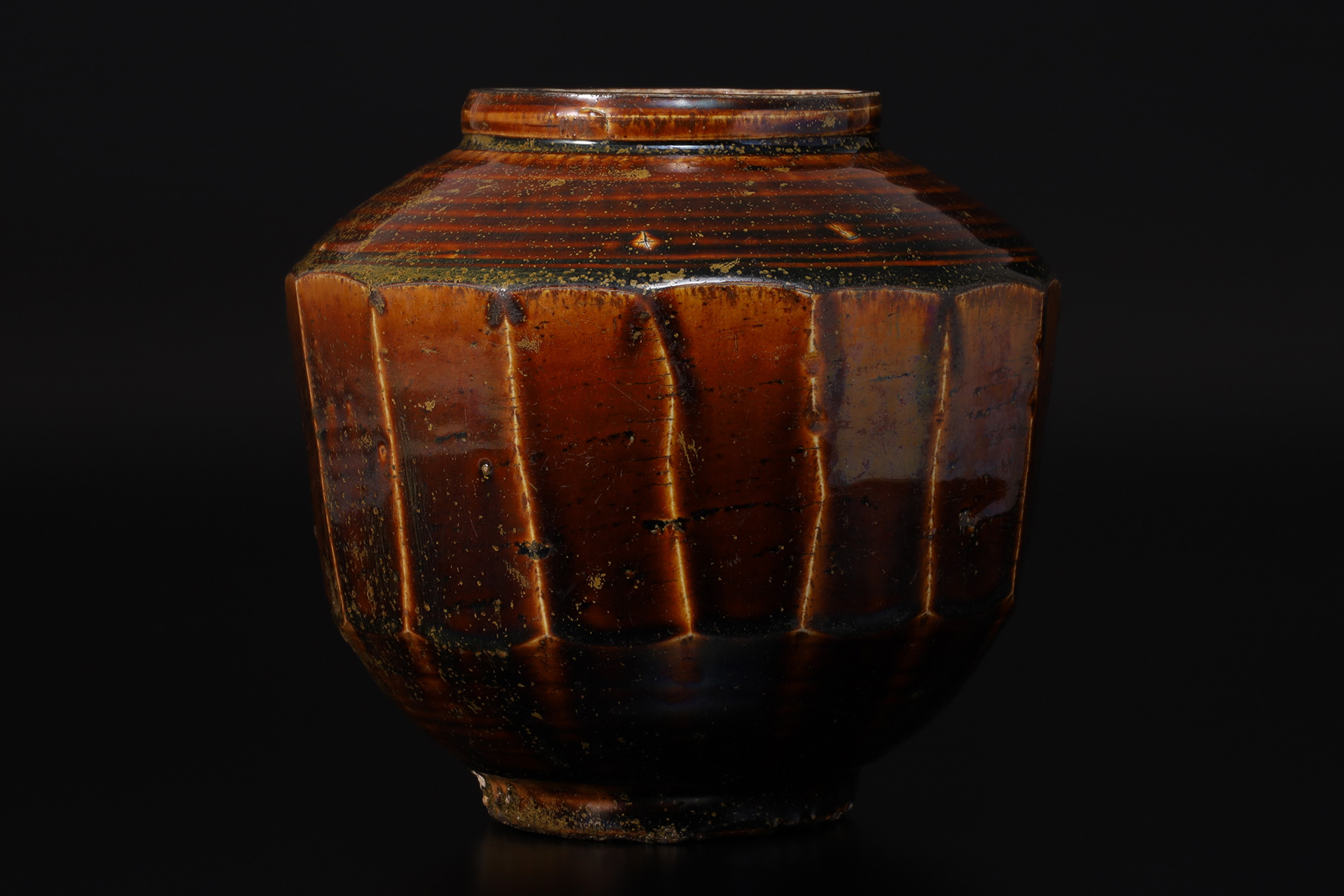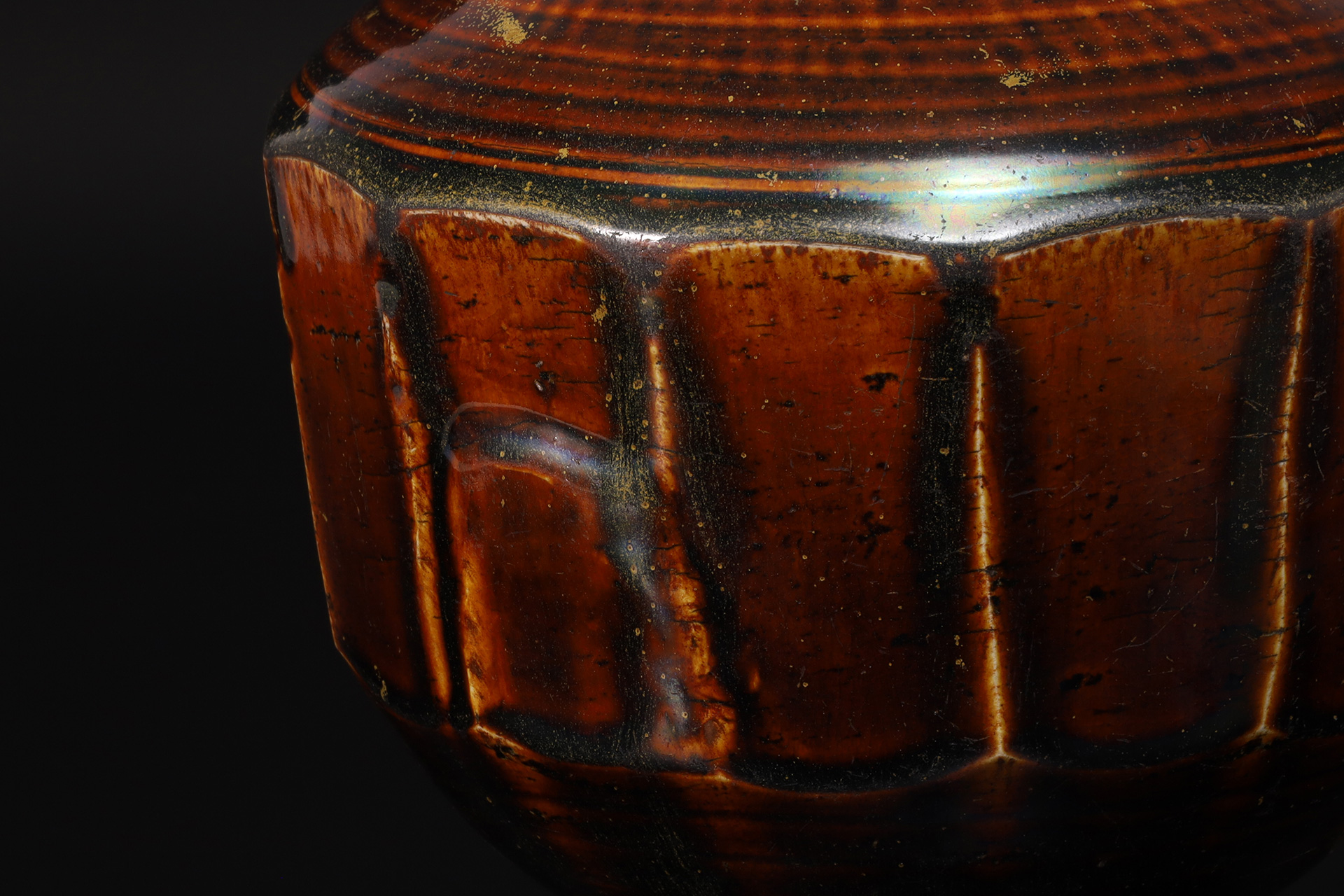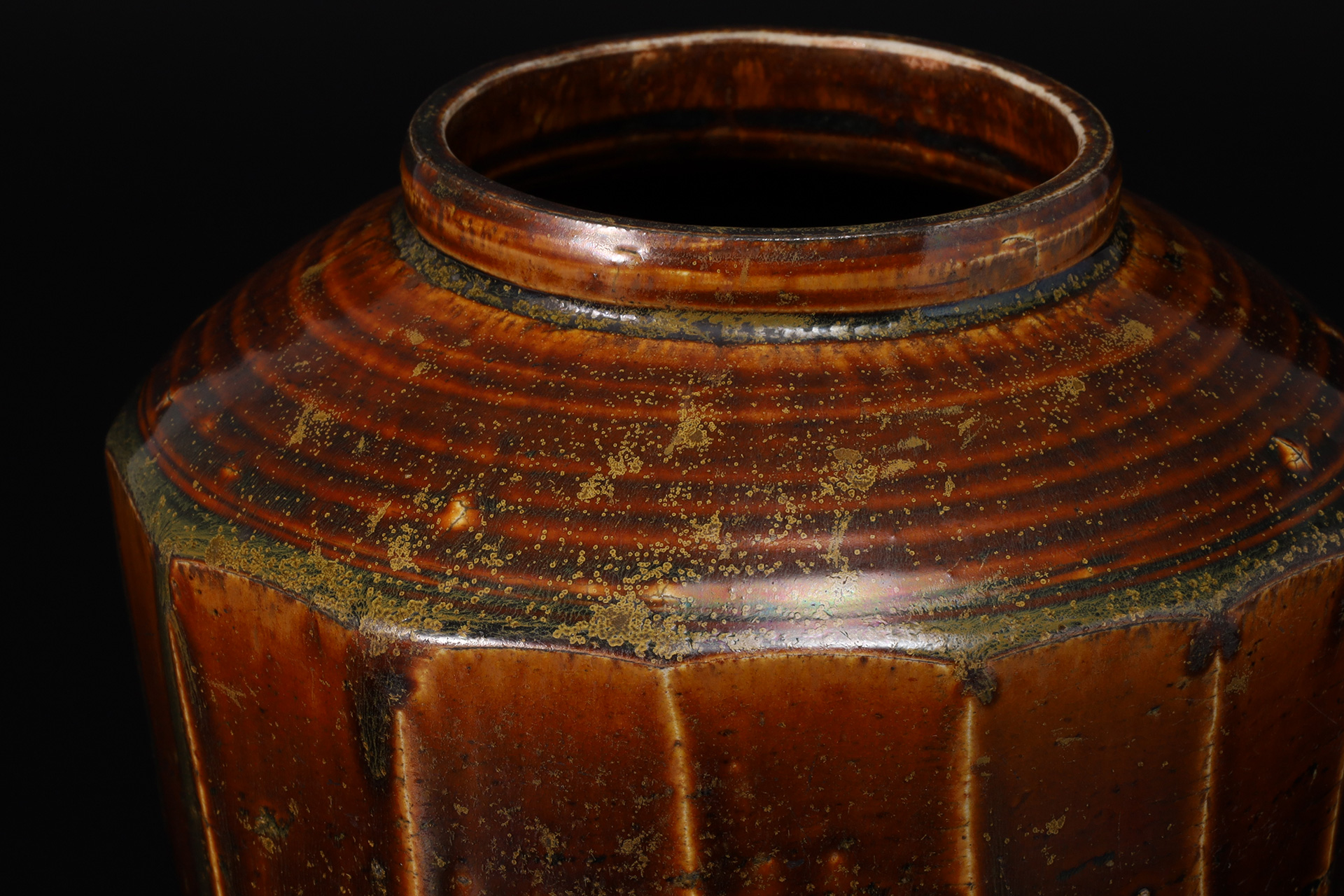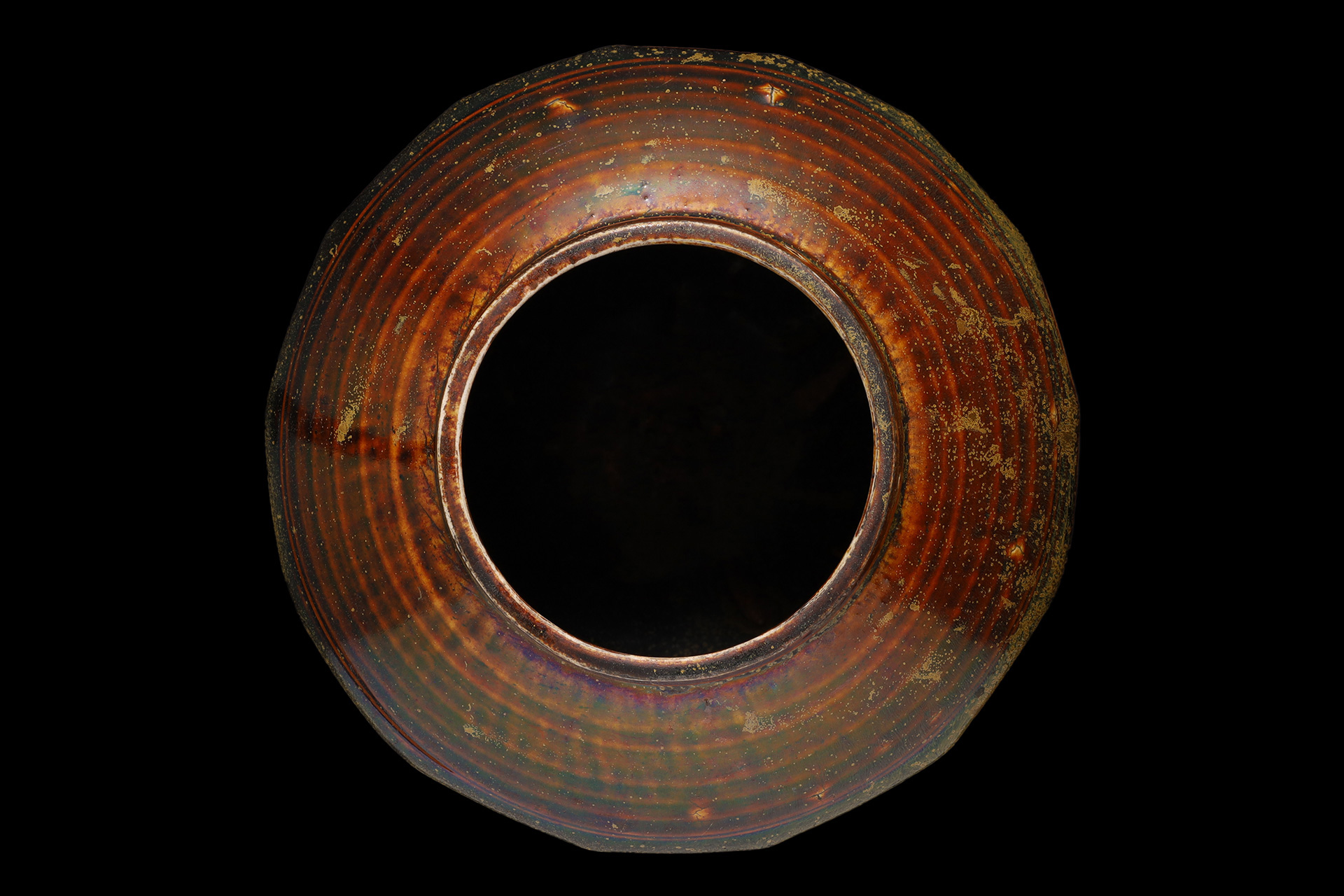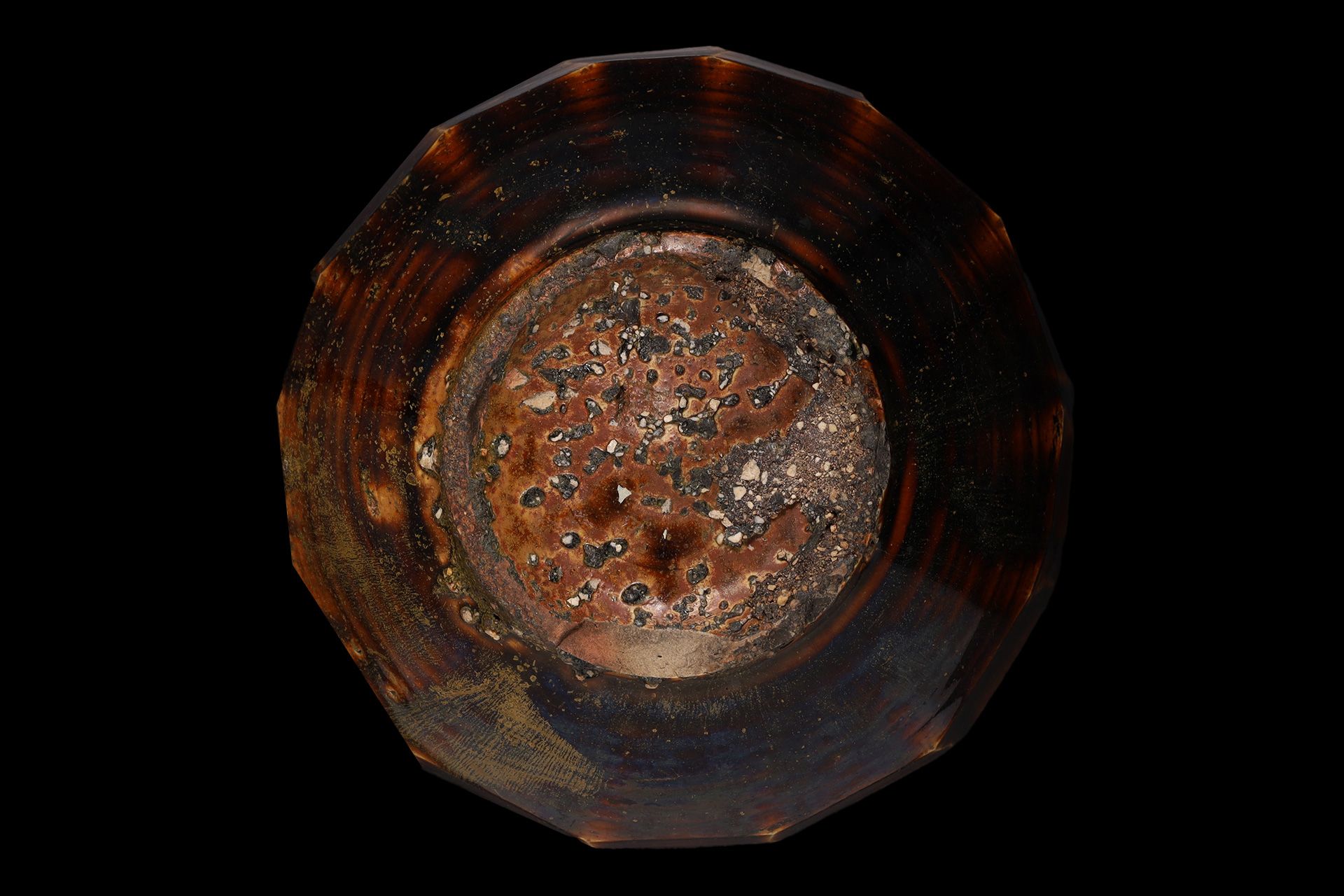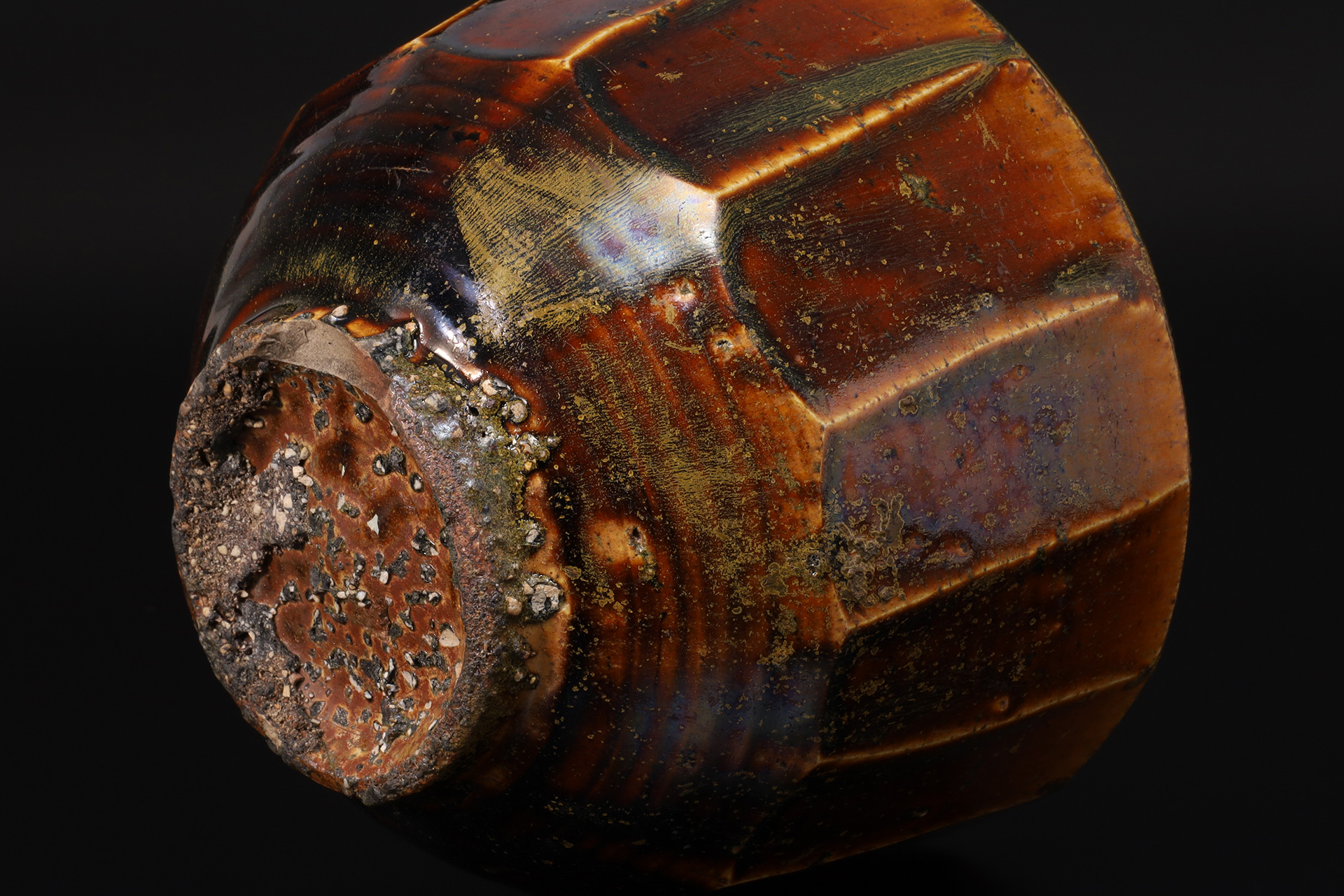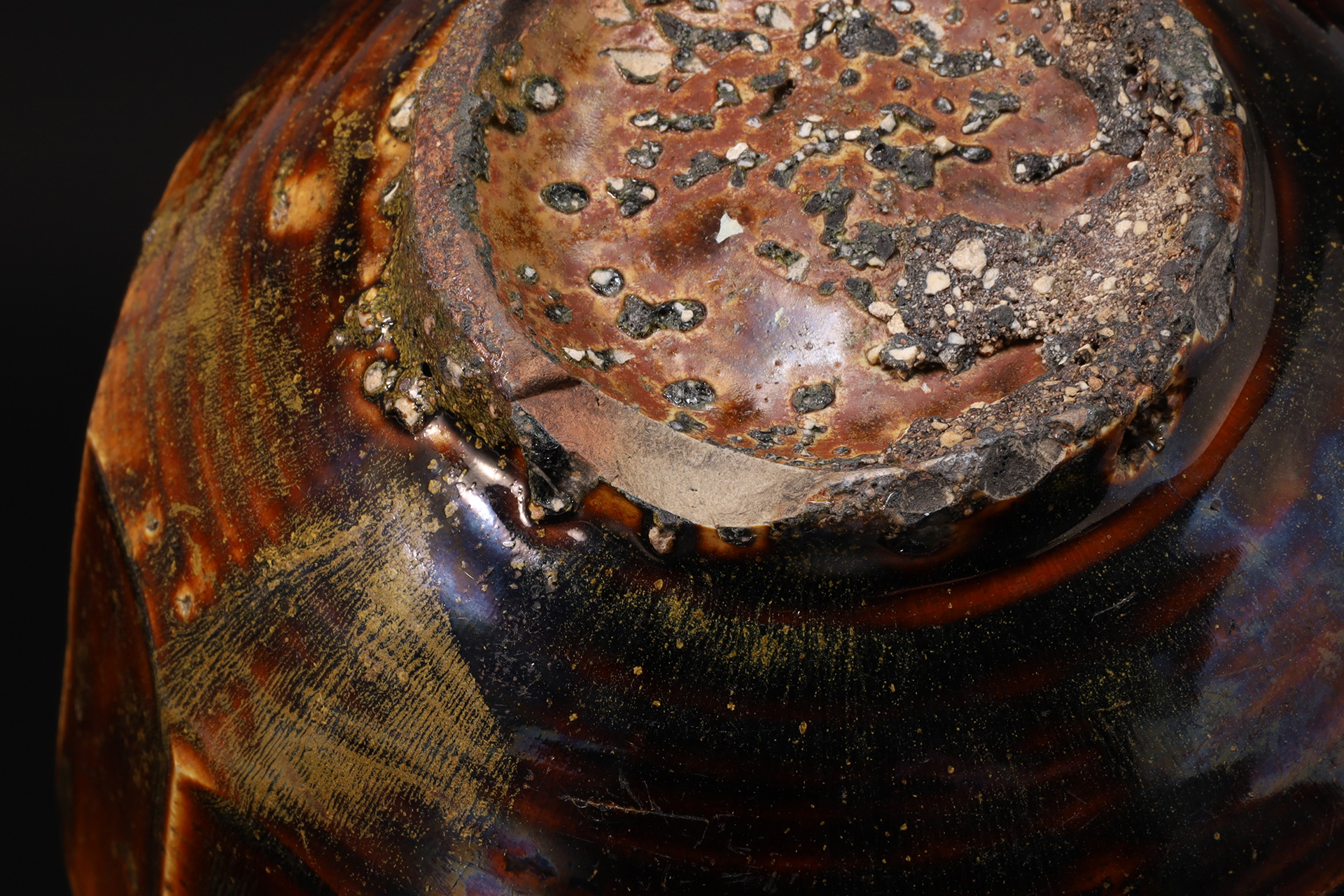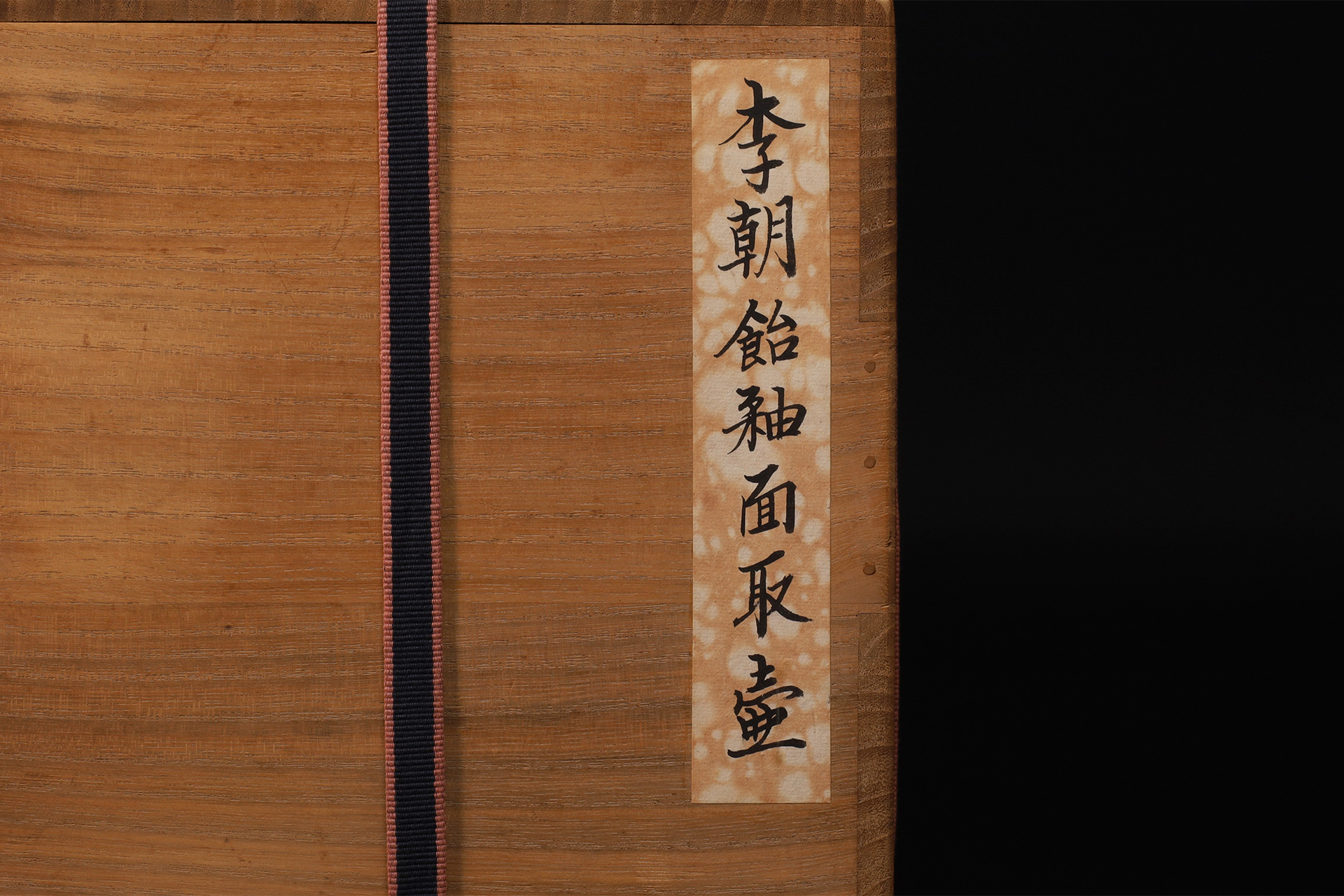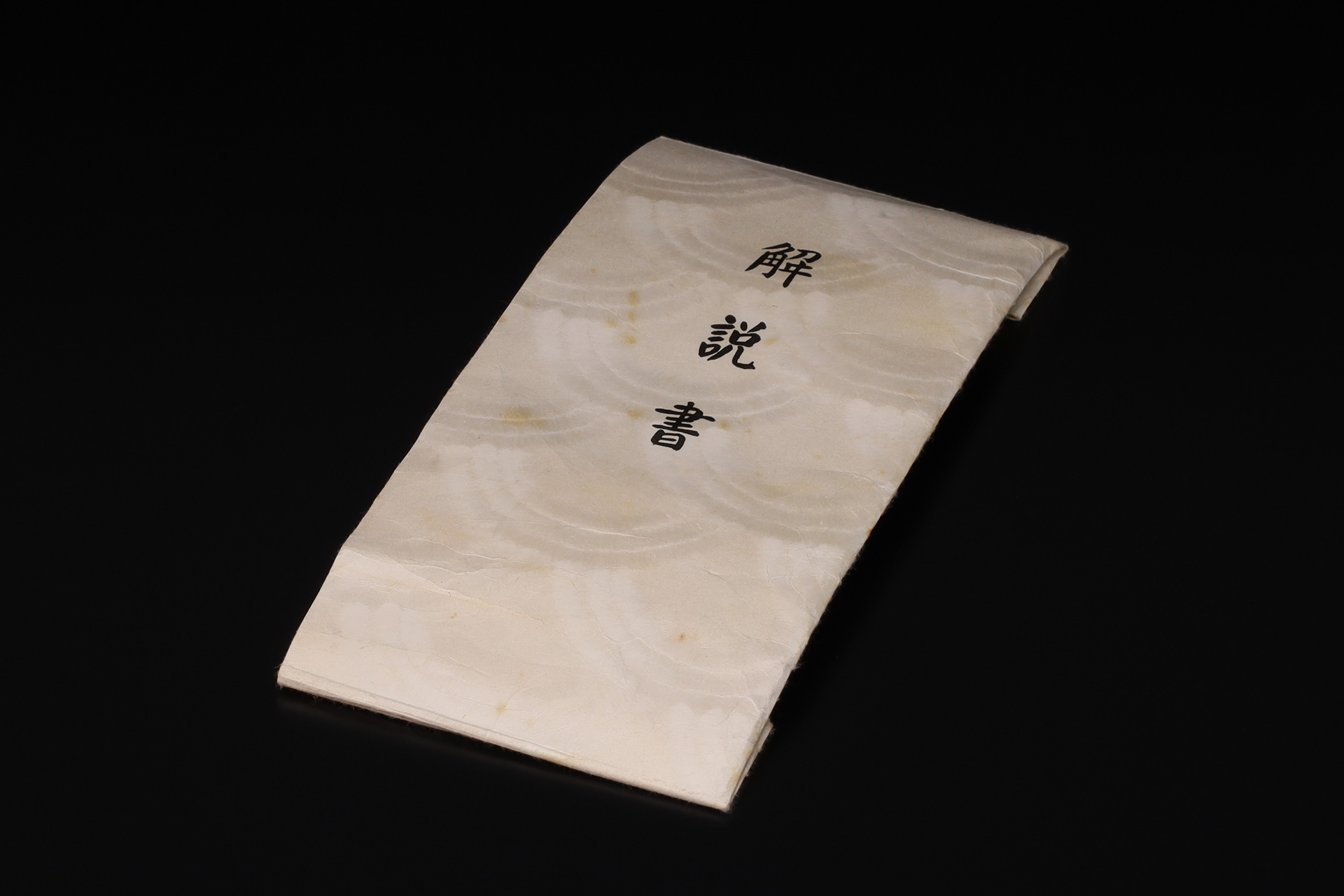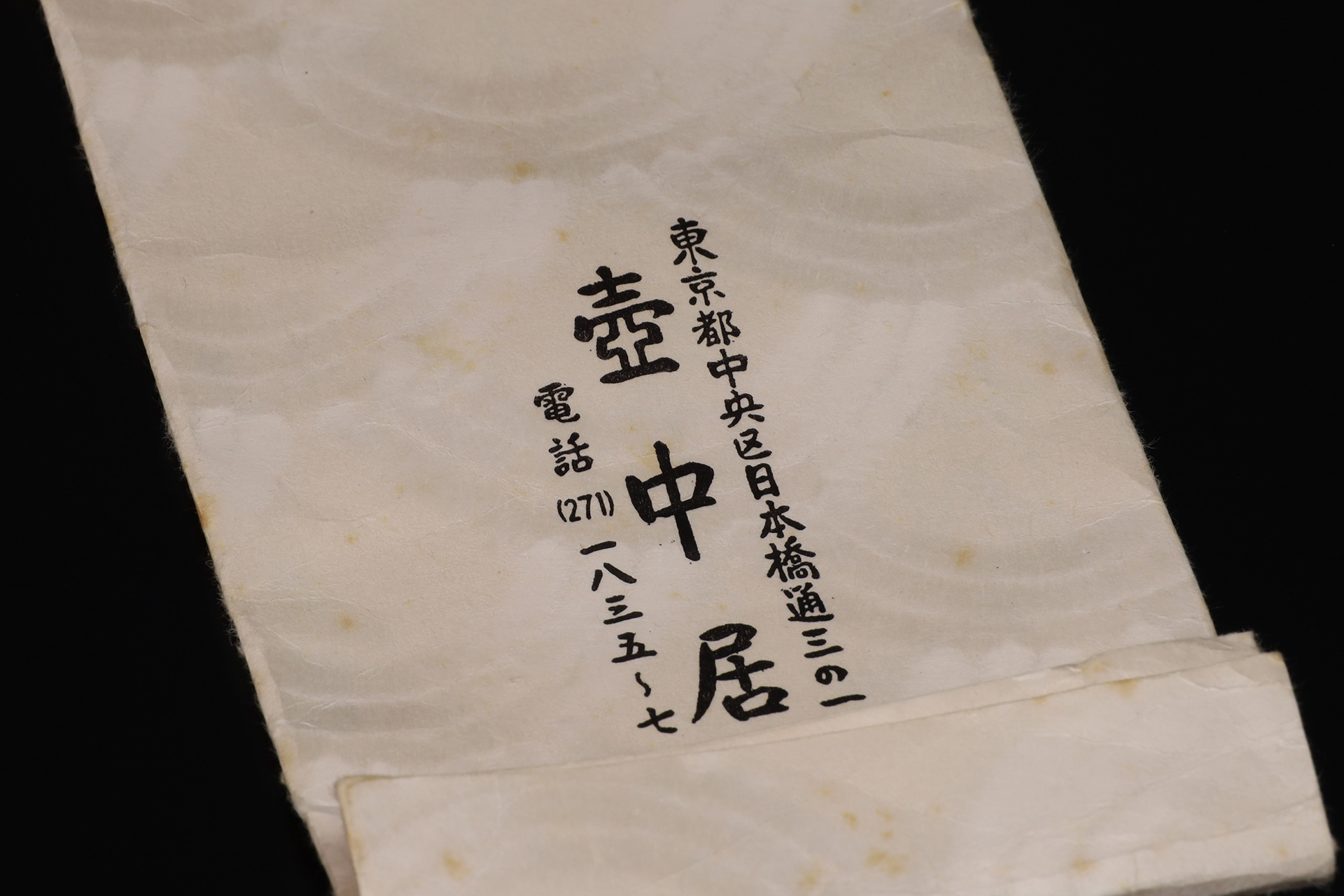This amber glazed jar was crafted in the late Joseon period. Its fourteen-faceted body creates a gentle visual rhythm, while the glaze’s subtle gradations of tone evoke shadows that lend the surface a quiet depth. Originally intended as a utilitarian storage vessel, the piece embodies a refined interplay between function and form.
Inquiry
- Product Code
- 250902-5
- Period
- Joseon Dynasty
19th Century
- Weight
- 1,106g
- Width
- 17.6cm
- Mouth Diameter
- 9.5cm
- Height
- 16.7cm
- Base Diameter
- 8.2cm
- Fittings
- Paulownia Box (Provenance: Kochukyo)
Explanatory Note by Kochukyo
- Condition
- There are flakes on the base
The refined form and lustrous amber glaze are striking in their harmony. The sand adhering to the base and lower rim evokes a rustic, unpretentious charm.
Joseon Dynasty
The Joseon Dynasty was the last unified dynasty of Korea, founded by Yi Seong-gye in 1392 on the Korean Peninsula. The country’s name was adopted in 1393 after Yi Seong-gye requested recognition from the Ming emperor. The name “Yi Dynasty” has become established in Japan and has long been used. As Buddhism, which had flourished during the Goryeo Dynasty, declined and policies to suppress Buddhism and revere Confucianism were promoted, the spirit of Confucianism became deeply ingrained as the code of conduct for people’s lives, and the ideals were to revere purity and innocence and to cultivate a simple, frugal spirit. As Confucianism spread, rituals were also held on a grand scale, from the imperial court to the general public, and white porcelain was highly valued for ritual vessels, as “White” was a pure and innocent color that symbolized holiness and simplicity. Decorations such as blue-and-white, iron-glaze, and copper-red-glaze were created based on white porcelain, but under a system that valued frugality, colored decoration were never fired until the end. In 1897, after the Sino-Japanese War (1894-1895), the country’s name was changed to “Daehan”. After the Russo-Japanese War (1904-1905), it became a Japanese protectorate, and came to an end with the annexation of Korea in 1910. The brothers Noritaka Asakawa and Takumi had a deep understanding of and love for Yi Dynasty ceramics and played a key role in bringing them to public attention in society. It was Muneyoshi Yanagi who became interested in them under their guidance.
